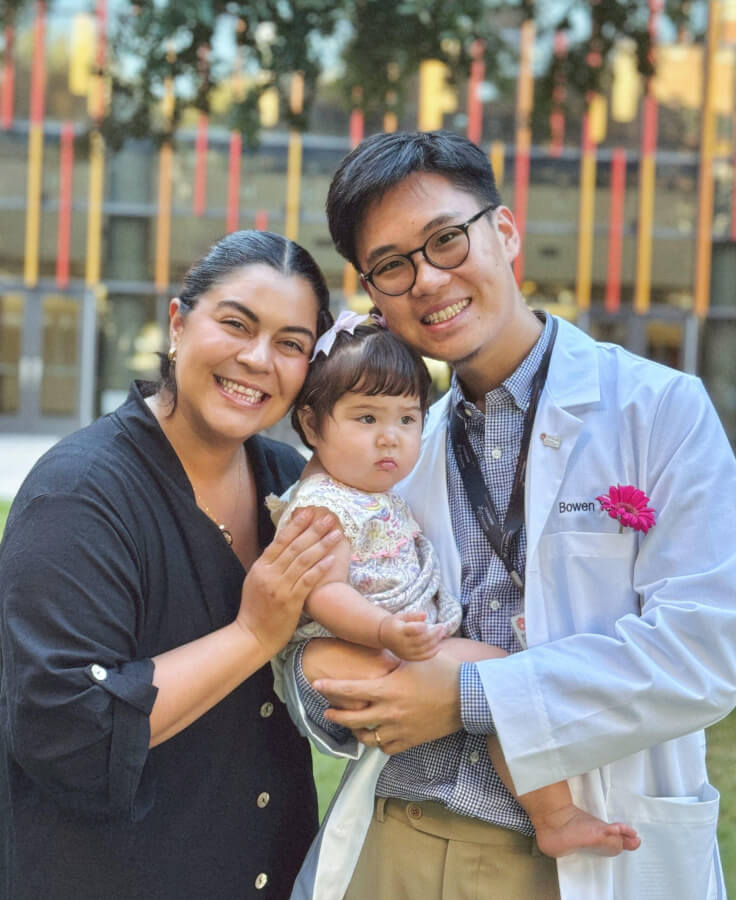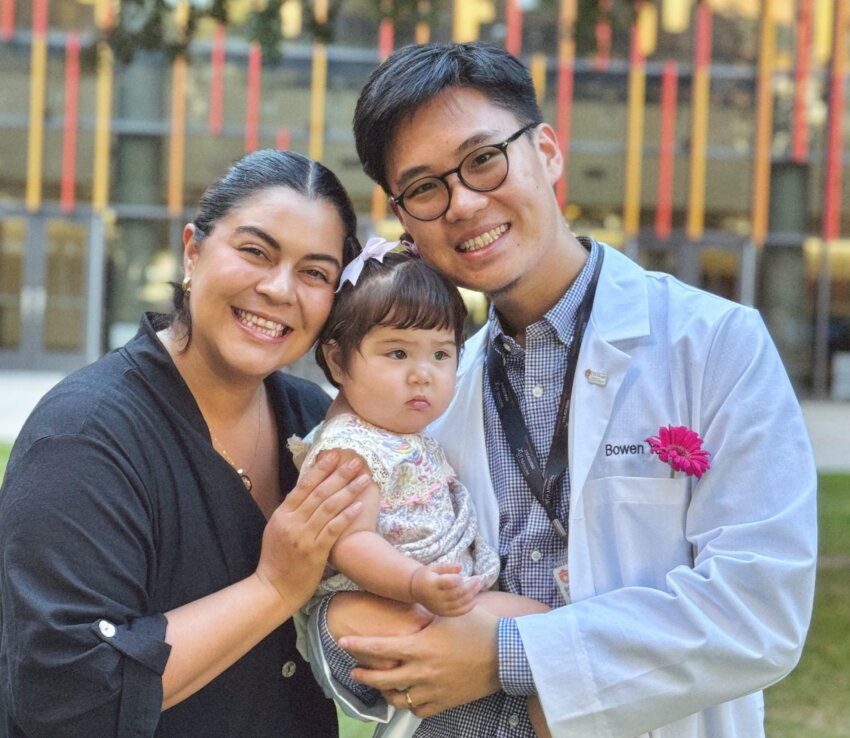When Bowen Yang, a PhD candidate in the university’s Graduate School of Biomedical Sciences, graduates this May, he will head to UTHealth Houston’s McGovern Medical School for his residency in diagnostic imaging and nuclear medicine.
For the past three years, Yang has worked in UT Health San Antonio’s Research Imaging Institute, which performs a range of basic, clinical and translational research using noninvasive, quantitatively biomedical imaging methods for measuring the structure and function of living organisms.
Yang’s research has focused primarily on using magnetic resonance imaging, or MRI, as a tool to understand disease characteristics. His projects have encompassed the heart and the brain as well as studying the liver to uncover mechanisms underlying developmental programming.
“MRI is really good at producing high-resolution images without radiation so that there is no secondary damage,” said Yang.
“In assessing heart function, we aim to develop advanced imaging biomarkers and establish normative reference ranges to help guide clinical decisions, such as when to initiate treatment,” Yang said. Part of his research has also included comparisons of heart function across the aging spectrum.
Yang’s work also focuses on understanding disease progression and the long-term effects of early-life influences — such as prenatal exposure to synthetic glucocorticoids — on offspring health.
Learning to pivot
Yang’s undergraduate studies in China were focused on medical science. His desire to incorporate a study abroad component is what originally brought him to UT Health San Antonio. But what was, at the time, supposed to be a four-month learning experience that began just prior to the COVID-19 pandemic turned into his application for master’s degree studies and then admission into his current doctoral studies program.
 Along the way, Yang found new purpose — not only in his academic path but also in the life he began building with his wife, Alexa. Her constant support and belief in his potential played a defining role in his decision to stay in San Antonio and pursue graduate studies. As his partner, Alexa has been a steady source of encouragement through each transition, and the foundation of the life they now share as a growing family, said Yang.
Along the way, Yang found new purpose — not only in his academic path but also in the life he began building with his wife, Alexa. Her constant support and belief in his potential played a defining role in his decision to stay in San Antonio and pursue graduate studies. As his partner, Alexa has been a steady source of encouragement through each transition, and the foundation of the life they now share as a growing family, said Yang.
Now a doctoral candidate and a new father, Yang reflects on how far he’s come.
“I like to plan ahead, but in reality, you can’t always prepare yourself for what might emerge or cause you to diverge from your original plan,” said Yang. His shared wisdom for new graduate students just starting their research careers is to learn to continually adapt.
“When things don’t go according to plan, and you’re tired and feel like you’ve had enough, hang in there. Things have a way of turning around — even if not always according to plan.”
Yang also advises seeking out peer relationships and support. He has appreciated that the university and GSBS are focused on addressing the mental health of students, with lots of activities and opportunities to get involved in different groups.
While Yang notes that it is less common for students to have families during graduate school, he has felt more grounded since getting married and experiencing the birth of his now 18-month-old daughter.
“I can say this has definitely changed me. I feel like I better understand myself and understand my need to be responsible for others besides myself.”
That’s not to say it’s been easy. The birth of his daughter coincided with his transition to a new lab and a new set of research challenges. But the newness of fatherhood quickly helped Yang learn how to prioritize his time and energy and to seek a balance between his personal life and his research.
“I don’t have any time to waste,” said Yang.
Leaning in on the next adventure
Yang is excited about the new adventure that awaits him and his family and for his residency in Houston, which will immerse him in a mix of research and clinical training. It will also expand his imaging experience beyond understanding disease characteristics, or the disease phenotype, to the disease mechanism — the specific processes at the cellular or molecular level that cause a disease. Understanding the mechanism is essential for prevention and treatment, explained Yang.
“What makes nuclear medicine so interesting is the molecular imaging where the radiation allows you to detect molecules binding to specific things, providing a next-level image that can identify disease targets,” said Yang. One example is the tracers that can be used to measure the level of tau protein in the brain of an Alzheimer’s patient to assess disease progression.
Ultimately, Yang’s goal is to continue his research in the imaging space to apply within a clinical setting to improve patient care. He envisions that integrating multimodal data — from imaging to omics — combined with artificial intelligence, will enhance both research efficiency and clinical decision-making.
“As the imaging technology continues to advance and improve resolution, AI will help us more quickly process and know how to address a particular health challenge. And that will make treatment more efficient and effective for patients,” said Yang.


